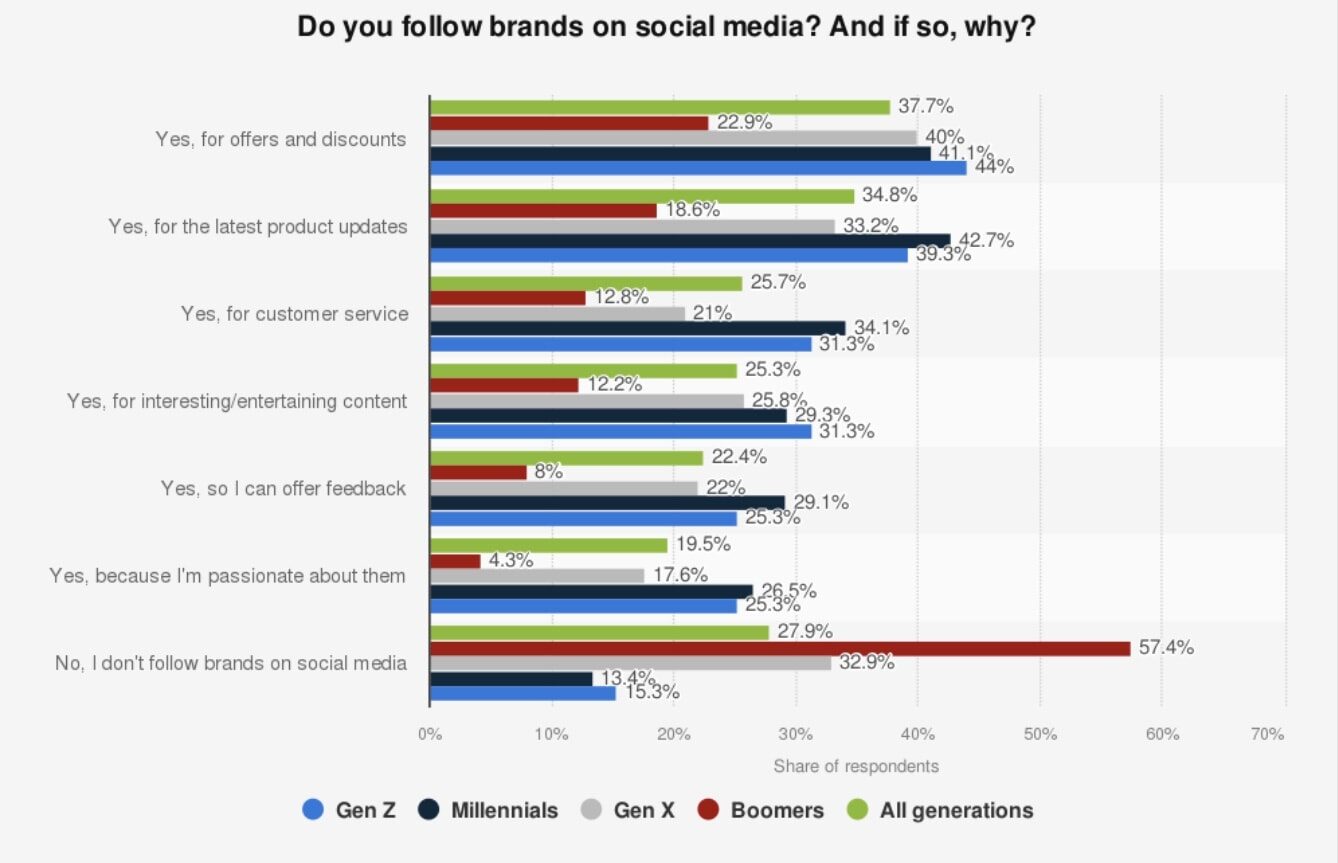Who are you more likely to take a recommendation from? A slick, professional marketing campaign, or your best friend with impeccable taste?
Most consumers would pick the savvy friend, which is why recruiting and amplifying brand advocates plays a key role in many brands’ modern marketing strategies. These super-customers provide the kind of word-of-mouth marketing that money can’t buy.
But what exactly is brand advocacy? And how can you harness it to promote your brand? This blog post will answer those questions and provide five ways to encourage brand advocacy among your existing customers.
What is Brand Advocacy?
Brand advocacy describes the organic promotion of your brand by enthusiastic customers.
Brand advocates’ efforts often result in increased sales, improved brand perception, and better customer loyalty. Cultivating brand advocacy among your customers can increase customer lifetime value and decrease customer acquisition costs.
Some actions a brand advocate might take include:
- Sharing a positive post about your brand on social media
- Recommending your product to their friends
- Writing an honest review of your business on their personal blog after receiving great service from your team
How to Build Brand Advocacy: 5 Noteworthy Strategies
You can boost sales by encouraging your customers to talk about and share your brand and products, and by giving them the tools to make it easy. Here are five ways you can encourage customers to become loyal advocates for your brand.
1. Emphasize Brand Characteristics That Current Advocates Love
Create marketing copy and campaigns that emphasize the most shareable selling points about your brand. Current advocates will also find it easier to share your brand resources because these are the features they already love and want to share with other potential customers.
Start by asking your current brand advocates about their favorite brand characteristics and product features. Here’s how:
- First, find your brand advocates by looking for brand mentions with tools like BrandWatch and Brand24.
- Next, reach out to those top advocates and get to know them. You can do this with a survey, or through customer interviews. Ask questions like:
- If you were describing our products to a friend, how would you do it?
- What comes to mind when you think of our brand?
- How would you describe our brand in three words?
Once you’ve collected that info, home in on recurring themes and use those to inform your marketing copy.
2. Offer Referral Incentives That Meet Multiple Consumer Needs
Referral incentives are a key part of building a brand advocacy program because they give advocates added motivation to promote your brand. In fact, according to PowerReviews, 73% of people say they’ll review a product or service when they receive an incentive. However, you may need to offer more choices beyond regular discounts, coupons, and exclusive deals.
Weight Watchers, for example, offers three tiers of creative rewards, from key chains in Tier 1 to Bluetooth speakers in Tier 3 to incentive referrals.
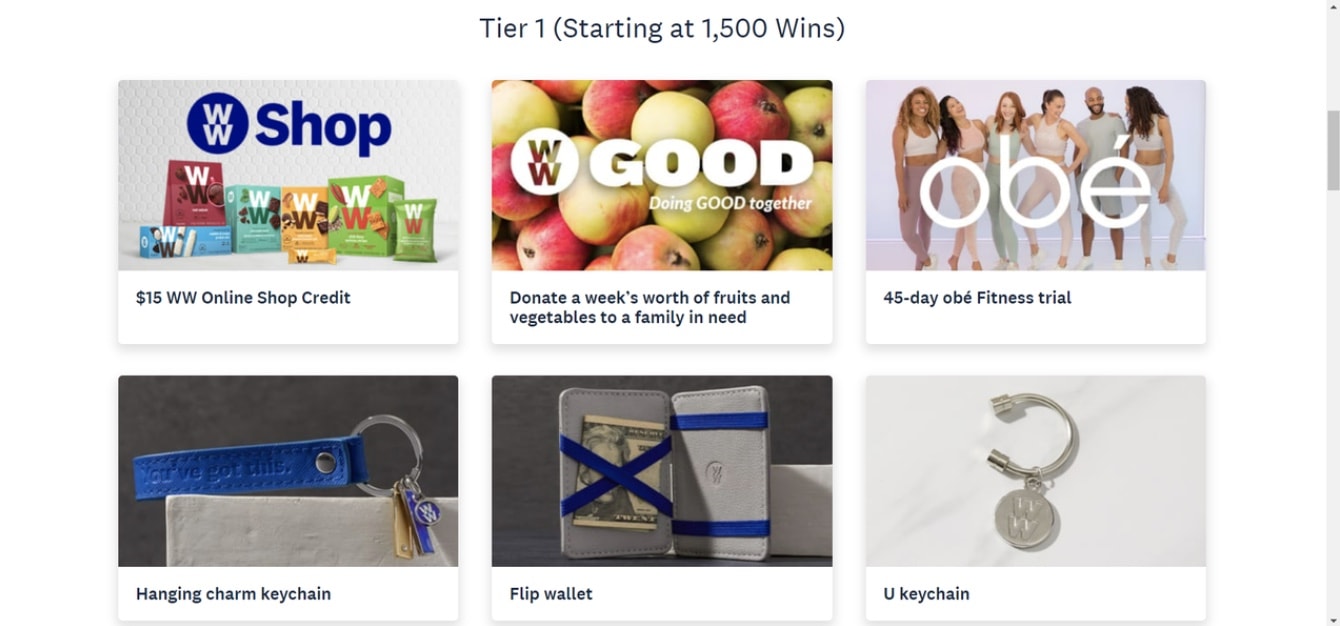
[Source]
Consider what appeals to your customer demographics to find the perfect referral incentives for your company. If you run a baby crib brand, for example, your audience is most likely young parents who’ll appreciate diaper supplies, baby sunscreen, a subscription to a meditation app, or a parenting magazine.
3. Get Creative With Your Social Media Engagement
Social media engagement helps build brand advocacy and awareness because it humanizes your brand.
A New York Times study on the Psychology of Sharing found that sharing is all about relationships. 68% of participants reported sharing content to give people a better sense of who they are, and what they care about. 49% said sharing allows them to inform others of products they care about and potentially change opinions or encourage action.
To attract more brand advocates, engage your audience in creative ways that don’t feel like an advertisement for your brand. Create sharable assets that potential brand advocates can feel good about sharing.
A brand that excels at this is Away. The luggage company creates inspirational and humorous content on their Instagram.
Consumers are encouraged to share their posts because of their unique aestethic and because they represent a very specific travel lifestyle that their customers identify with.
Check out some more social marketing examples here.
4. Include Brand Advocates in Your Promotions
Current brand advocates are loyal customers who are already excited about your brand. Leverage that natural excitement to drive brand awareness and win more advocates. Including advocates in promotions is also a great way to show customers you value them and want them involved in your processes.
Some ways to involve brand advocates in promotions include:
- Hosting giveaways where current customers enter by sharing their stories online or tagging friends in photo posts, just like Missguided does here.
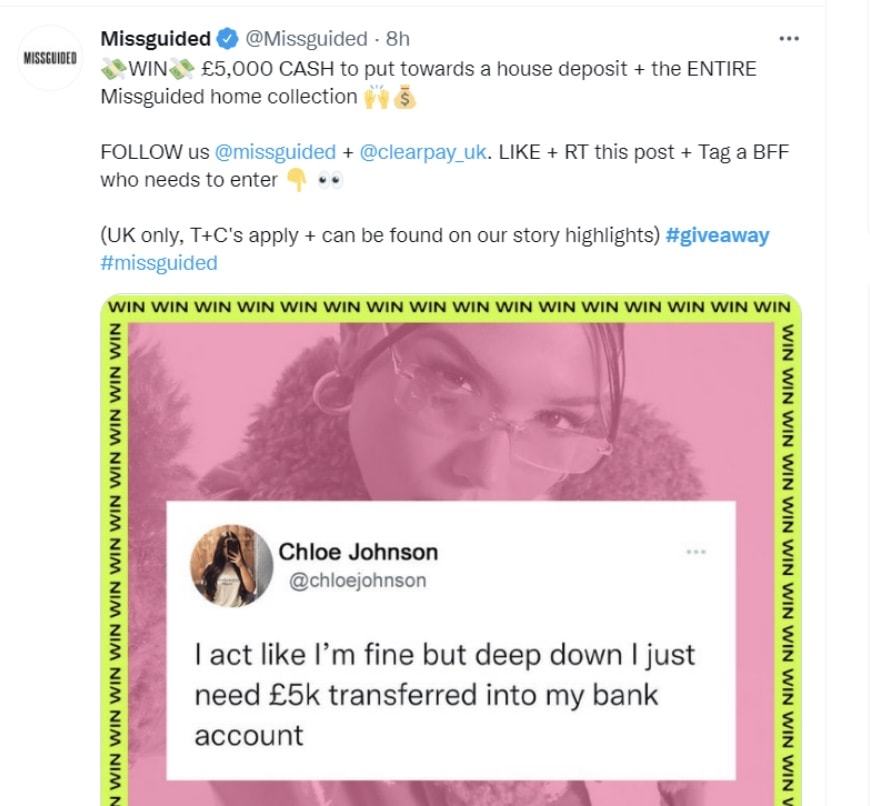
- Collecting and using stories from brand advocates in your advertising material, especially if they’re already an influencer. Retweets like Starbucks does in their Pumpkin Spice Latte campaign count too. And don’t forget to reward them.
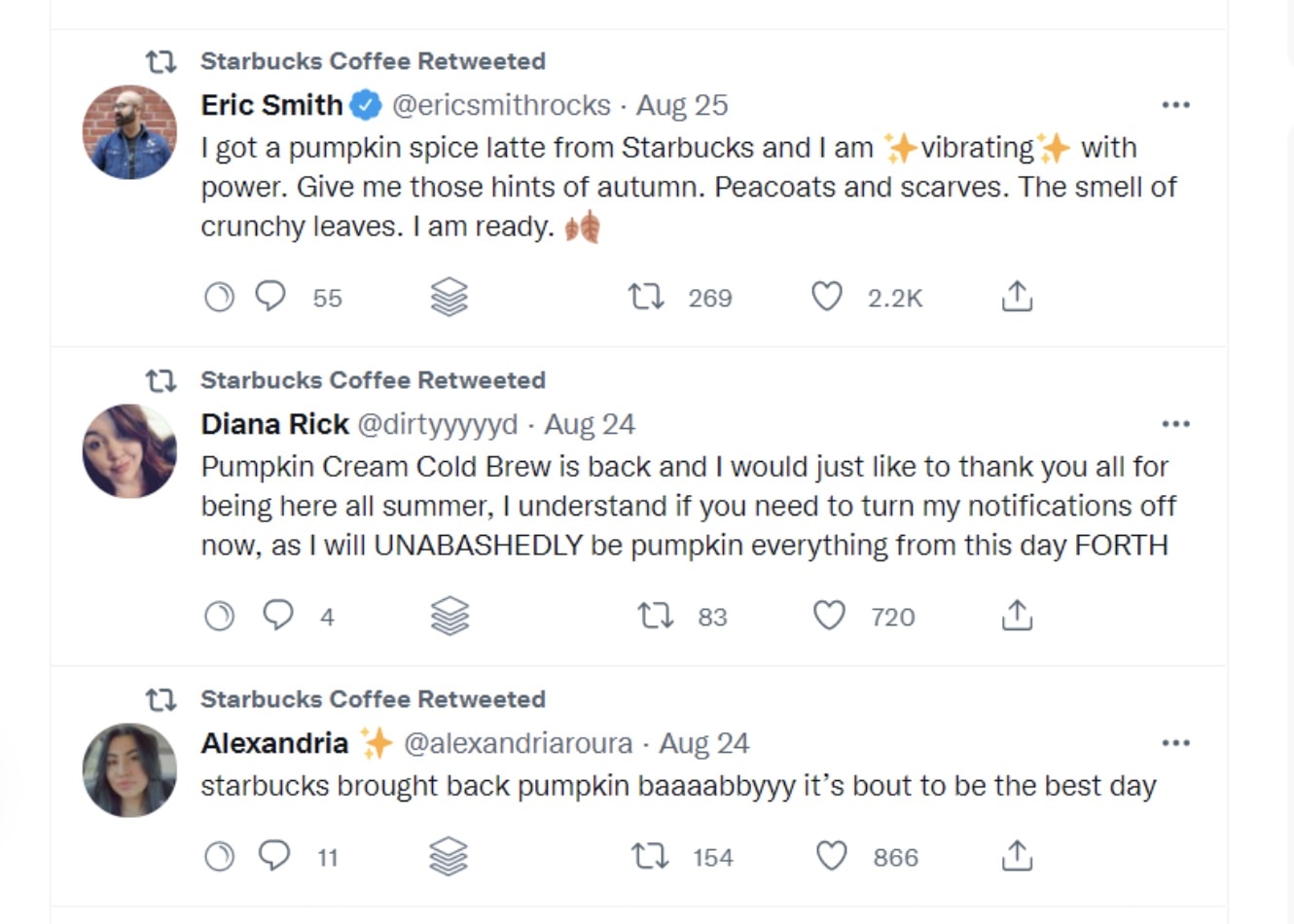
5. Use Consumer Data to Create More Personalized Experiences
In a Consumer Brand Experiences report, Google found that 61% of customers expect tailored experiences from their brands.
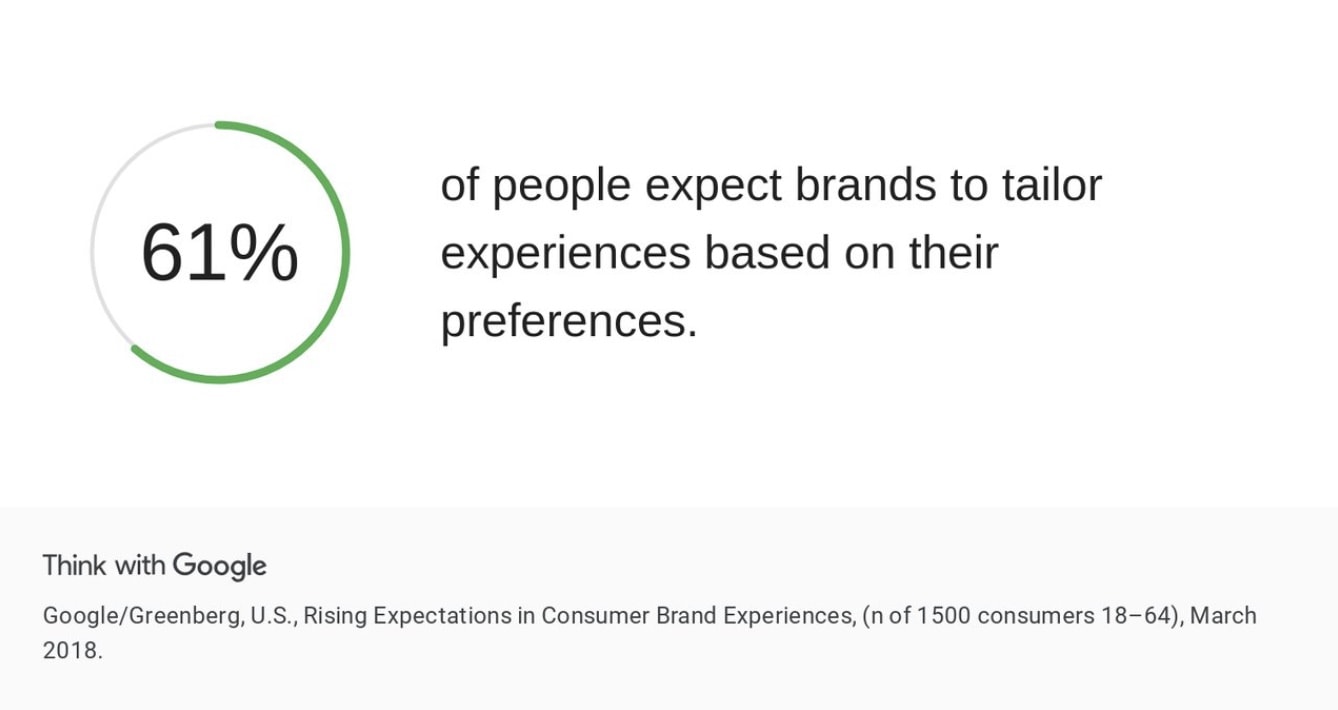
Personalized customer experiences help your company gain customer trust, establish stronger customer relationships, and build brand loyalty. Consumer data is a key part of building brand advocacy because it allows your company to personalize customer experiences easily.
To create more personalized experiences for customers, consider using the data you already have on file from past purchases and interactions with current advocates and potential new customers.
Consider using customer service surveys or questionnaires as an opportunity for advocates to suggest new features they would like added to your product. You can also use consumer data with messaging tools that automatically send personalized messages. Customers will appreciate this show of customer advocacy and love your brand for it.
Leverage Brand Advocates to Gain More Advocates and Customers
Your current brand advocates are a valuable asset. They’ve already spent time and money on your product, so they have an emotional stake in the company’s success and a personal interest in sharing it with others. This means you can supercharge those passionate fans into drivers for more sales by giving them incentives or rewards for referring friends.
Extole helps companies set up referral marketing programs, where customers earn points for referring people who buy products through their website. Sign up for a demo to get started!
